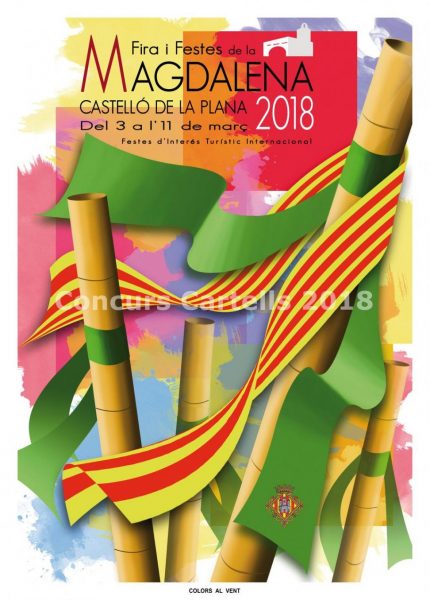The Magdalena Festival is the main celebration of Castellón de la Plana, the capital city of the province of Castellón. It commemorates the origins of the city, the move from the Magdalena mountain to its current location on the fertile coastal plain in 1251, a right granted in the 13th century by the King of the Crown of Aragon, Jaume I.
This festival lasts for 9 days, starting on the third Saturday of Lent at 12:00 noon, when fireworks are set off; the number of fireworks reflects the number of years that have passed since the origin of the festival. This is followed by a mascletà, a firework display, prepared by the winners of the previous year’s competition taking place in Plaza del Primer Molí.
One of the main parts of the festival are the 19 gaiatas. The gaiatas are the monuments, once defined as”a burst of light, with no fire or smoke”. They are about 19 feet high and resemble the lanterns that the inhabitants of Castellón used to find their way through the marshy ground at night. During the festival, each district exhibits its gaiata in its central square.
The most important day of the Magdalena Festiva is the first Sunday with the, Pilgrimage of the canes, a walk to the original site of the town with pilgrims bearing their green bandanas and holding canes.
Afterwards people arrive at the Mary Magdelene Chapel. A mascletá announces the arrival of the pilgrims.
Fireworks, parades, music, some discrete drinking and bullfighting are the essence of the festival.


